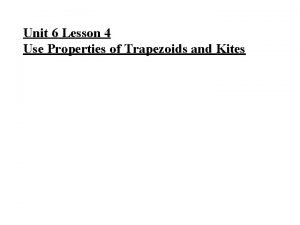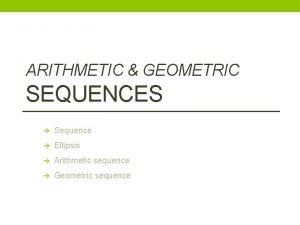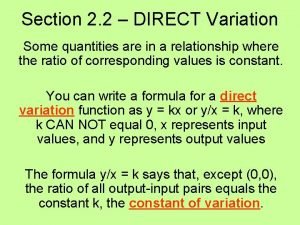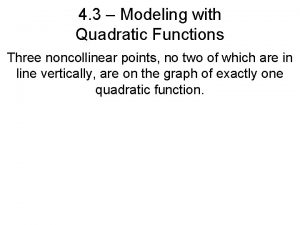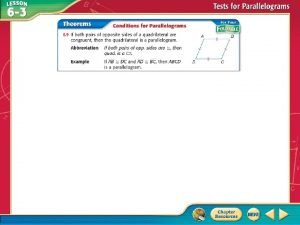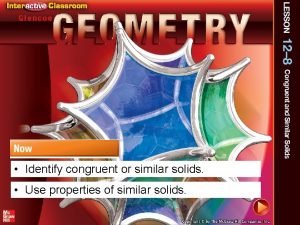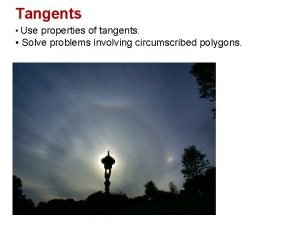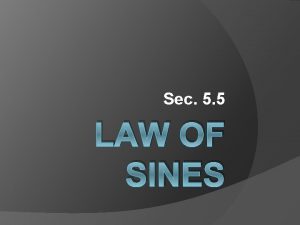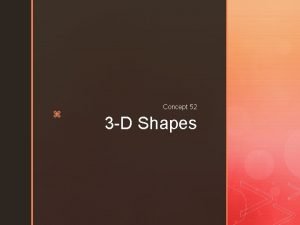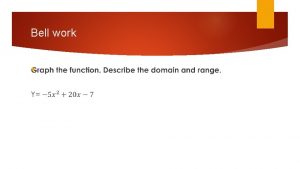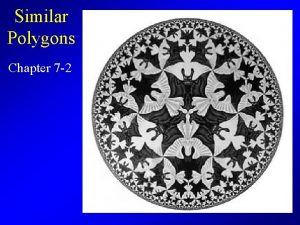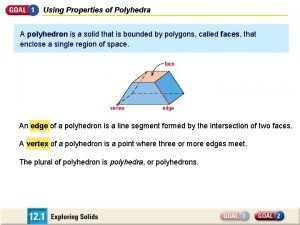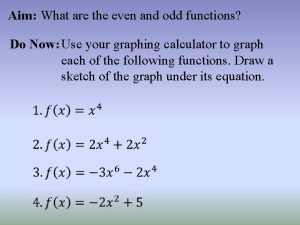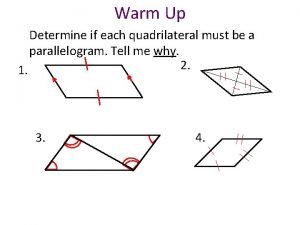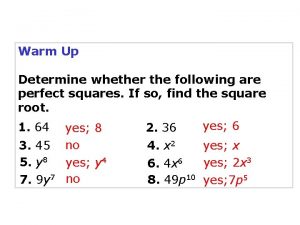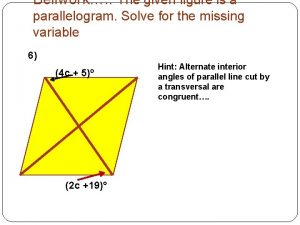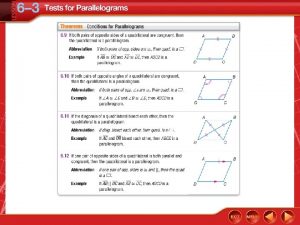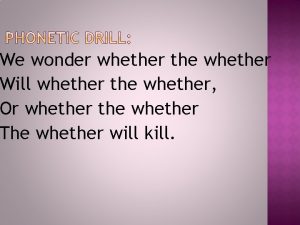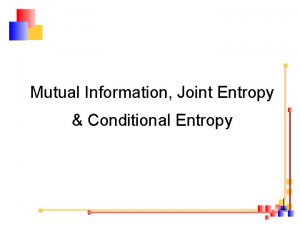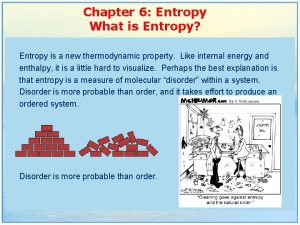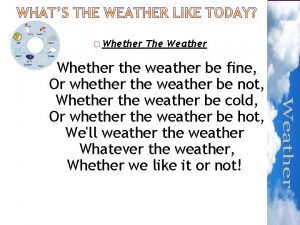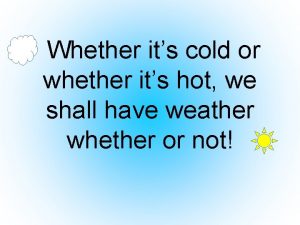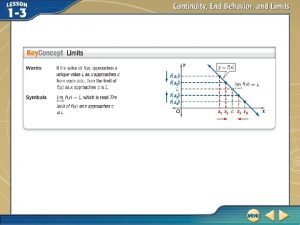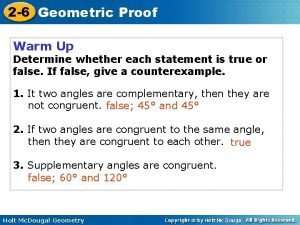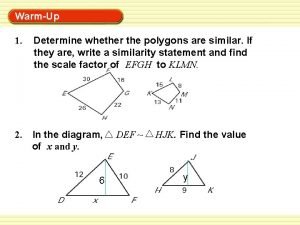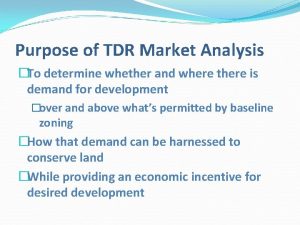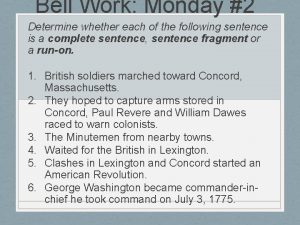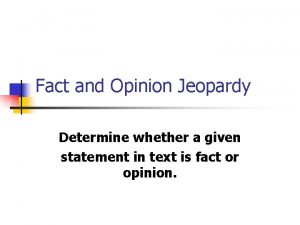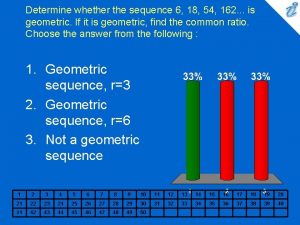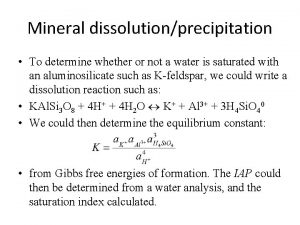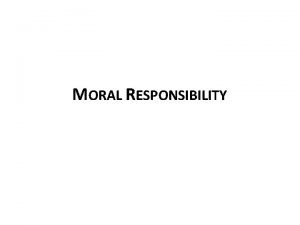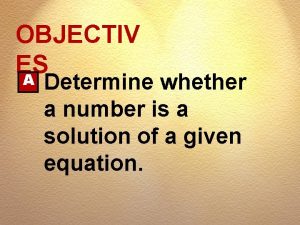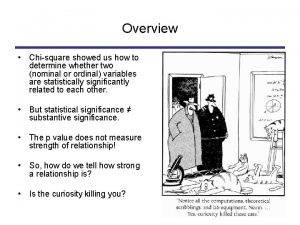Entropy Review Determine whether the entropy is increasing

























![Example (cont’d) Calculate Keq for the reaction in question 2 above when [SO 3] Example (cont’d) Calculate Keq for the reaction in question 2 above when [SO 3]](https://slidetodoc.com/presentation_image_h/1616eafd6122c9797b0f7b4dd8344769/image-26.jpg)











- Slides: 37

Entropy Review Determine whether the entropy is increasing or decreasing for each of the following and why? Loading the dishwasher Condensation of water Nuclear Fusion ( Inc / Dec )

Pressure is the force per unit area exerted by a solid, liquid or gas In KMT, pressure is described as being caused by the collision of molecules with their container. Standard SI unit = Pascals (Pa)

Atmospheric Pressure is considered to be a relative constant = 101, 300 Pa Atmospheric Pressure in various units: Atmospheres → 1 atm Kilopascals → 101. 3 k. Pa mm Hg or torr → 760 mm Hg or 760 torr pounds per square inch → 14. 7 psi Convert the following: 1. 2 atm into Pascals 769 torr into atm

Temperature is related to the speed of the molecules The standard SI unit for temperature is the Celsius (°C) or the Kelvin (K) In calculations for gases, you must use the KELVIN scale!

Absolute Zero At absolute zero (0 K), all molecular movement stops. 0 K = -273 °C

Temperature Conversions Convert from Celsius to Kelvin: °C = K – 273 K = °C + 273 Convert from Fahrenheit to Celsius: (°C x 9/5) + 32 = °F °C = (°F – 32) x 5/9 Convert the following: 32 °F to °C 53°C to °F 1513 C° to K -44 °C to °F 146 K to °C 1200 F° to K

Temperature and Pressure From the triple point graph, what happens to boiling point if a) pressure decreases? b) pressure increases?

Factors affecting reaction rates A manometer measures experimental pressure whereas a barometer measures atmospheric pressure.

Vapor Pressure is defined as the pressure exerted by a vapor in thermodynamic equilibrium with its condensed phases (solid or liquid) at a given temperature in a closed system. Liquids that evaporate easily tend to have high vapor pressures.

Gas Laws Gases have a very predictable relationship between their pressure, volume and temperature since the gas molecules are not bonded together. The COMBINED GAS LAW relates these three variables in a closed gas system where no gas can enter or leave the system. Units on both sides of the equation must match and you must use temperature in KELVIN.

Gas Laws The volume of a gas-filled balloon is 30. 0 L at 40. 0 °C and 153 k. Pa. What volume will the balloon have at STP? STP Pressure = _______ Temperature = _____ A 2. 45 L football initially inflated to 1. 25 atm is brought in from the cold (4°C). What is the final volume when it is inside at room temperature?

Boyle’s Law We often see the laws split into three separate laws: Boyle’s, Charles’ and Gay-Lussac Boyle’s Law: Constant temperature means isothermal This is an Inversely Proportional relationship.

Boyle’s Law The balloon has been filled with 3. 0 L of air. Being creative, they try to “squish” it to half its original size. If the pressure begins at 18 psi, what will the final pressure be? At room temperature, a 8. 57 L container begins with a pressure of 215 k. Pa, What will the final volume be at 1. 85 atm?

Charles Law Constant Pressure means isobaric This is a directly proportional relationship

Examples: A 1. 75 L balloon at 25°C was placed into a freezer at -2°C. What will the final volume be? 2. What is the initial temperature of a 4. 5 L basketball when taken out of a cooler? The final temperature is 29°C and the volume increases to 5. 1 L

Gay-Lussac’s Law Constant Volume means isovolumetric The relationship is directly proportional

Ideal Gas Law: The ideal gas law is the only law that allows the AMOUNT of gas to change. The ideal environment for any gas is under LOW pressure and HIGH temperature. P = Pressure in atm V = Volume in liters T = Temperature in Kelvin n = moles in mol R = 0. 082 in L atm/mol K

Examples Find the pressure of an ideal gas given a temperature of 18°C, 5. 5 g of chlorine, and the gas is 550 m. L in size, and the R value is 0. 0821 L atm/mol K. 3. 8 L of Nitrogen gas is at 163 k. Pa and 64°C. Assuming this is an ideal gas, how many grams of nitrogen are present?

Dalton’s Law of Partial Pressures: The law of partial pressures state that the sum of all partial pressures is equal to the total pressure of a system. 1. Three cylinders of equal volume are added together. The first cylinder is at 2. 3 atm, the second is at 150 k. Pa, and the third is at 900 mm. Hg. What is the total pressure? 2. The total pressure of a Nitrogen chamber is 3. 8 atm. If 195 k. Pa of nitrogen is extracted, what is the partial pressure of the nitrogen left in the chamber?

Effect of Concentration Earlier we said that if we increase the concentration of a species, the reaction will try to reverse that increase. PCl 5 (g) ↔ PCl 3 (g) + Cl 2 (g) Adding PCl 5 will cause the system to produce less PCl 5 (→) Removing PCl 5 will cause the system to produce more PCl 5 (←)

System in Equilibrium The following system is at equilibrium. How would each of the following changes shift the position of the equilibrium? CO (g) + 2 H 2 (g)↔ CH 3 OH (g) ∆H = -91 k. J What happens if…. . Raise the temperature. Increase the size of the container. Increase pressure. Add solid Fe mesh to absorb CO(g). Add more H 2 (g). Add more Carbon Monoxide

Equilibrium Constants Calculations ~ Keq The Equilibrium Constant, Kc or Keq, relates to a chemical reaction at equilibrium. It can be calculated if the equilibrium concentration of each reactant and product in a reaction at equilibrium is known.

Equilibrium Constants Calculations ~ Keq Below is a “generic” balanced chemical equation: a. A + b. B c. C + d. D Lower case letter represent the coefficients. Upper case letters represent the molecules/atoms The equation for equilibrium constant Brackets mean concentration in MOLARITY

More Equilibrium Constant Pure solids and liquids should be “excluded” from the equilibrium expression by placing a “ 1” If K >1 products are favored at equilibrium If K < 1 reactants are favored at equilibrium A Homogenous equilibrium has everything present in the same phase. The usual examples include reactions where everything is a gas, or everything is present in the same solution. A Heterogeneous equilibrium has things present in more than one phase. The usual examples include reactions involving solids and gases, or solids and liquids.

Examples Gaseous Dinitrogen Tetroxide is in equilibrium with Gaseous Nitrogen Dioxide. Write and balance this equation, then write the equilibrium expression.
![Example contd Calculate Keq for the reaction in question 2 above when SO 3 Example (cont’d) Calculate Keq for the reaction in question 2 above when [SO 3]](https://slidetodoc.com/presentation_image_h/1616eafd6122c9797b0f7b4dd8344769/image-26.jpg)
Example (cont’d) Calculate Keq for the reaction in question 2 above when [SO 3] = 0. 016 M, [SO 2] = 0. 0056 M, and [O 2] = 0. 0021 M. Does this reaction favor reactants or products?

Equilibrium-Pressure You can also write an equation using the pressures of the reactants and products. The pressure constant and the equilibrium constant are related. R = 0. 0821 atm*liter / mol*K

Thermodynamics Movement of heat energy Heat (or Specific Heat Capacity = C) the amount of heat necessary to move 1. 00 gram of a substance 1. 00 °C Specific Heat Capacity is the amount of heat necessary to move the temperature 1. 00 °C DIFFERENT SOURCES DEFINE THESE DIFFERENTLY – I AM SORRY…. SCIENCE IS WEIRD

Thermodynamics Q = Heat Energy in Joules or calories Specific 1 Heat Capacity of Water cal/g °C 4. 184 J/g °C

Thermodynamics 1. A hot iron bar is thrust into 200 -m. L of water at 25 °C. If the water rises to 42 °C, what is the amount of heat energy gained by this endothermic reaction?

Thermodynamics 2. In an exothermic reaction, 50 -kilocalories are emitted from a hot brick having a heat capacity of 1. 32 cal/g °C. What was the mass of the brick if it began at 300 °C and fell to 45 °C?


Energy for Phase Changes Heat of Fusion (Hf) or Molar Heat of Fusion is the energy absorbed to melt/or released to freeze per unit mass Water Hf = 6. 01 k. J/mol Water Hf = 3. 34 x 102 J/g Heat of Vaporization (Hv) or Molar Heat of Vaporization is the energy absorbed to boil/or released to condense per unit mass Water Hv = 40. 7 k. J/mol Water Hv = 2. 26 x 103 J/g

Energy for Phase Changes If you start with 5. 0 g of ice at 0°C, how much energy must be absorbed to melt it all? 2. How many grams of ice can be melted with the addition of 1. 5 k. J of energy? 3. How many moles of water can be evaporated with the addition of 20 k. J of energy?

Energy for Phase Changes


Phase Change Graph Show on the graph the location of the boiling point temperature and the melting point temperature. What phase of matter is missing? Name and describe it. What do you note about temperature during the phase change?
 Whether the weather be fine
Whether the weather be fine Trapezoid angles
Trapezoid angles Recursive vs explicit
Recursive vs explicit Determine whether y varies directly with x
Determine whether y varies directly with x How to tell if a sequence is arithmetic
How to tell if a sequence is arithmetic 4-3 modeling with quadratic functions
4-3 modeling with quadratic functions Determine whether the figure is a parallelogram
Determine whether the figure is a parallelogram Determine whether the solids are similar
Determine whether the solids are similar What is the perimeter of adc?
What is the perimeter of adc? Determine whether the following relation is a function.
Determine whether the following relation is a function. State whether the given measurements determine zero
State whether the given measurements determine zero Solid
Solid Determine whether a function is even or odd
Determine whether a function is even or odd Determine whether each word
Determine whether each word Multiplying and dividing matrices
Multiplying and dividing matrices Determine whether each pair of polygons is similar
Determine whether each pair of polygons is similar 1-7 three dimensional figures
1-7 three dimensional figures Is a sphere a polyhedron
Is a sphere a polyhedron Determine whether a function is even or odd
Determine whether a function is even or odd Determine if each quadrilateral is a parallelogram.
Determine if each quadrilateral is a parallelogram. Determine whether each trinomial is a perfect square
Determine whether each trinomial is a perfect square Determine whether the quadrilateral is a parallelogram.
Determine whether the quadrilateral is a parallelogram. How to determine whether a quadrilateral is a parallelogram
How to determine whether a quadrilateral is a parallelogram Cái miệng nó xinh thế chỉ nói điều hay thôi
Cái miệng nó xinh thế chỉ nói điều hay thôi đặc điểm cơ thể của người tối cổ
đặc điểm cơ thể của người tối cổ Mật thư anh em như thể tay chân
Mật thư anh em như thể tay chân Bổ thể
Bổ thể Tư thế ngồi viết
Tư thế ngồi viết Thẻ vin
Thẻ vin Thể thơ truyền thống
Thể thơ truyền thống Hát lên người ơi
Hát lên người ơi Các châu lục và đại dương trên thế giới
Các châu lục và đại dương trên thế giới Từ ngữ thể hiện lòng nhân hậu
Từ ngữ thể hiện lòng nhân hậu Diễn thế sinh thái là
Diễn thế sinh thái là Vẽ hình chiếu vuông góc của vật thể sau
Vẽ hình chiếu vuông góc của vật thể sau Giọng cùng tên là
Giọng cùng tên là Làm thế nào để 102-1=99
Làm thế nào để 102-1=99 Tỉ lệ cơ thể trẻ em
Tỉ lệ cơ thể trẻ em

